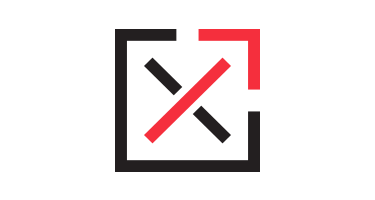When building a website, many designers overlook the functionality aspect of development. At a bare minimum, many of these folks consider site usage into the equation but fail to look at the big picture that includes: URL structure, efficient and effective breakdown of pages, meta, appropriate internal and external links, and relevant content. Rather, many designers are worried about the aesthetic nature of their work or the paycheck they get for basically putting some code together and giving you a framework shortly followed up by a “sayonara”!
How would you feel about paying someone a good amount of money to put together a website that looks cool but is completely dysfunctional? Adding insult to injury, shortly after you gain backend access to your brand new site you find that it’s so “un-user-friendly” that you’re stuck between a rock and hard place trying to add/edit content? Enough cliche’s, let’s get to the meat of website development, efficiency.
Efficiency can mean a lot of things. Formally, the word means that one (something) attains success with very little expended time, energy or money. Informally, it means getting the most bang for your buck. In a website’s case, you want to achieve success without all of the collateral components. No one really cares about your cool background image or crazy sidebars that are filled with 10 different widgets showing off your blog that hasn’t been updated in years. To you, your “special” features seem cool and relevant but it’s your customers’ thoughts that matter most. If they’re confused by your website then the site itself is not doing its job. Ultimately, efficiency is the key to making success that much easier to attain.
- Components of an efficient website:
- URL Structure and Page Breakdown
-
– Your URL structure is based upon organization. The more organized you are the better off you will be. Anticipation plays a key role in effective URL structure as well. You don’t want to find yourself scrambling to change something when you could have done it beforehand (always have a purpose when designing a website).
The URL is comprised of domain levels. For example, www.theclixgroup.com is comprised of three domains.The “com” portion of the URL is considered to be the top-level or first-level domain. The domains prefacing “com” are considered to be subdomains of “com”. “Theclixgroup” is the second-level domain and is the subdomain of “com”. Additionally, “www” is the subdomain of “theclixgroup” and “com”. Often times when you hear about a subdomain, people are talking about what is in place of “www”. Subdomains will continue to grow in popularity as sites try to get even more personalized.
Moving on with URL’s… After the top-level domain “com”, “net”, “info”, “org” or what have you comes the directory of files that make up your site’s content. The names of these folders that contain the HTML or PHP coding that make up your website coincide with the the words you see between the “/” “/” on your site. The best way to illustrate this is to use an example like this one: “www.weather.com/weather/today/Eureka+MO+63025”. In this case, there are three directories being used: “weather”, “today” and “Eureka+MO+63025” (a command oriented file that is dictated by coding that requires an input). In this case, I input 63025 in the main search bar on weather.com and received this folder. If I had put 90210, I would have gotten this page, “/Beverly+Hills+CA+90210”.
To the point… Your URL structure can be manipulated to focus on your site’s content. If you are a traditional advertising agency in St. Louis, you would possible work one of these URL structures for, in this case, billboards:
www.domain.com/advertising-agency/traditional-services/billboard-ads-st-louis
The example shows a breakdown where there are three directories (advertising agency, traditional services, and billboard ads st louis) within the root directory (domain.com/). Furthermore, there are two directories (traditional services and billboard ads st louis) within advertising agency and one directory (billboard ads st louis) within traditional services.
The final directory, billboard ad st louis is the most relevant keyword to describe your page. Although with some styles, a clean URL like this is difficult since many responses to website inputs (clicks, entries, anything that elicits a response) can be dictated by certain portions of code that result in there being something like this, “?maincategoryid=597&catalogid=4873”. Up until that website response, the URL was clean and there were no symbols.
When thinking about a website, take efficient URL structure to heart. In the end, it will keep you from enduring a headache or seven.
- Meta
-
– Meta involves HTML coding prior to the body of your content. For all of you people out there who don’t have a relative understanding of what HTML, CSS and PHP entails, there are tags within a webpage that are defined as meta. These meta tags are filled with metadata that is readable and interpreted by browsers, search engines and other web oriented services (they can not be viewed on the actual webpage).
There are many different purposes that metadata serve. For SEO, the description and title tags play a role in ranking. Why? They help define your page – making it more relevant is important and relevancy is the key to efficiency. These two metas have been commonplace for SEO tacticians for years. Make sure to address these appropriately during design and development.
Cliffhanger
Next week I will talk about internal and external linking as well as the importance of relevant content (content is king) when designing your website.



